
WEBPetroleum or crude oil, also referred to as simply oil, ... but kerogen formation occurred in a more complex manner due to a bigger variety of reactants. The total process of kerogen formation from the beginning of anaerobic decay is ... Along with the burning of coal, petroleum combustion is the largest contributor to the increase in ...
WhatsApp: +86 18203695377
WEBMay 29, 2021 · 8. Explain the process of formation of petroleum. Answer Petroleum was formed from dead organisms that got buried in the sea millions of years ago. These dead bodies got covered with layers of sand and clay. Lack of air, high temperature, and high pressure transformed these dead organisms into petroleum and natural gas. 9.
WhatsApp: +86 18203695377
WEBOct 19, 2023 · Over millions of years, heat and pressure from Earth's crust decomposed these organisms into one of the three main kinds of fuel: oil (also called petroleum ), natural gas, or coal. These fuels are called fossil fuels, since they are formed from the remains of dead animals and plants. Today, fossils fuels are necessary for human .
WhatsApp: +86 18203695377![[Telugu] Explain the process of formation of coal.](/kd8ezfh/306.jpg)
WEBStep by step video image solution for Explain the process of formation of coal. by Chemistry experts to help you in doubts scoring excellent marks in Class 8 exams. Updated on: 21/07/2023 Class 8 CHEMISTRY COAL AND PETROLEUM
WhatsApp: +86 18203695377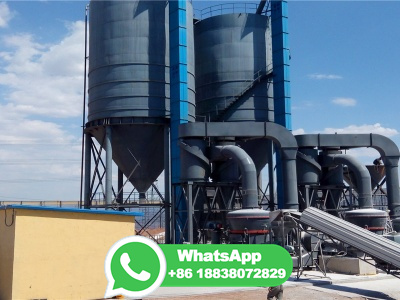
WEBUses of Coal. It is mainly used to generate heat and electricity. It is used in s and in industries to accomplish various tasks. It is the cheapest source of power fuel. The iron and steel industry depends heavily on fossil fuel for energy. It is also used to produce useful products such as coke, tar, and coal gas.
WhatsApp: +86 18203695377
WEBCoal formed millions of years ago when the earth was covered with huge swampy forests where plants giant ferns, reeds and mosses grew. As the plants grew, some died and fell into the swamp waters. New plants grew up to take their places and when these died still more grew. In time, there was thick layer of dead plants rotting in the swamp.
WhatsApp: +86 18203695377
WEBMar 18, 2024 · Nonrenewable energy comes from sources that will run out or will not be replenished in our lifetimes—or even in many, many lifetimes.. Most nonrenewable energy sources are fossil fuels: coal, petroleum, and natural is the main element in fossil fuels. For this reason, the time period that fossil fuels formed (about 360300 .
WhatsApp: +86 18203695377
WEBSolution. Petroleum is a fossil fuel that got formed from dead organisms that got buried in the sea millions of years ago. These animals slowly got trapped under soil and clay and more deposits were formed with time. Due to depth, the temperature and pressure raised and over the years they got converted into petroleum oil.
WhatsApp: +86 18203695377
WEBOct 19, 2023 · Natural gas is a fossil other fossil fuels such as coal and oil, natural gas forms from the plants, animals, and microorganisms that lived millions of years ago. There are several different theories to explain how fossil fuels are formed. The most prevalent theory is that they form underground, under intense conditions. As plants, .
WhatsApp: +86 18203695377
WEBThe NCERT Solutions: Coal Petroleum is an invaluable resource that delves deep into the core of the Class 8 exam. These study notes are curated by experts and cover all the essential topics and concepts, making your preparation more efficient and effective.
WhatsApp: +86 18203695377
WEB3 days ago · Explain the process of refining petroleum. Fill in the Blanks. ... The slowest and the last stage of coal formation is known as _____. The process of separation of crude oil into various components based on their boiling points is called _____.
WhatsApp: +86 18203695377
WEBJan 12, 2019 · The process by which petroleum can be separated from the various components is known as refining of petroleum. The components from which petroleum is separated have different boiling points. (Boiling Point is the point at which liquid is converted into gas on heating). Crude oil is heated in a furnace at around 400 degree Celsius.
WhatsApp: +86 18203695377
WEBMay 31, 2024 · Fossil fuel is a hydrocarboncontaining material of biological origin that can be burned for energy. Fossil fuels, which include coal, petroleum, and natural gas, supply the majority of all energy consumed in industrially developed countries. Learn about the types of fossil fuels, their formation, and uses.
WhatsApp: +86 18203695377
WEBThe advantages of using compressed natural gas (CNG) and liquified petroleum gas (LPG) as fuels are: (i) They can be burnt directly. (ii) They can be transported easily through pipe lines. (iii) They are clean fuels and do not give smoke when burnt. (iv) They give a lot of heat energy when burnt.
WhatsApp: +86 18203695377
WEBAug 15, 2023 · Coal is a nonclastic sedimentary rock. They are the fossilized remains of plants and are in flammable black and brownishblack tones. Its main element is carbon, but it can also contain different elements such as hydrogen, sulfur and oxygen. Unlike coal minerals, it does not have a fixed chemical composition and crystal structure.
WhatsApp: +86 18203695377
WEBJul 21, 2023 · Petroleum was formed from dead organisms that got buried in the sea millions of years ago. These dead bodies got covered with layers of sand and clay. Lack of air, high temperature, and high pressure transformed these dead organisms into petroleum and natural gas.
WhatsApp: +86 18203695377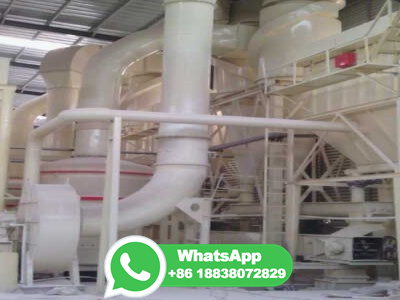
WEBJan 9, 2017 · The Process of Hydraulic Fracturing. Hydraulic fracturing produces fractures in the rock formation that stimulate the flow of natural gas or oil, increasing the volumes that can be recovered. Wells may be drilled vertically hundreds to thousands of feet below the land surface and may include horizontal or directional sections extending ...
WhatsApp: +86 18203695377
WEBAnswers (1) Petroleum was formed from the dead animals and plants, which live in the sea. when they died, their bodies settled at the bottom of the sea and covered by the layers of soil. After a million years, absence of air, high temperature and pressure transformed these dead organisms into petroleum and natural gas. Posted by.
WhatsApp: +86 18203695377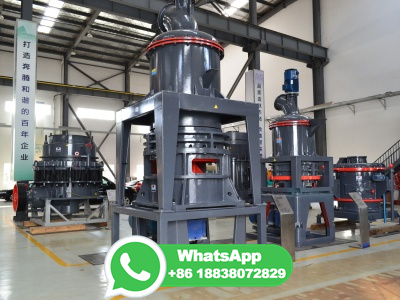
WEBCarbonization: The slow process of conversion of wood into coal over millions of years is called carbonization. Uses of coal : Coal is widely used as a fuel for domestic and industrial appliions. Thermal power stations burn coal to convert water into steam, which is then used to run generators that produce electricity.
WhatsApp: +86 18203695377
WEBMar 22, 2016 · Origin of petroleum. Millions of years ago, the earth was populated with plants and animals. Much of that life was loed in or adjacent to ancient rivers, lakes, and sea. As plants and animals died, their remains settled to the bottom of these bodies of water. Ancient rivers carried mud and sand that buried the organic material.
WhatsApp: +86 18203695377
WEBJul 7, 2021 · The process of coal formation is called carbonisation. The dead plants and vegetation due to temperature and high pressure over hundreds of years slowly turned into coal. This slow conversion of dead plants and forests into coal is called the process of carbonisation. ... Q. Explain the process of formation of petroleum. Ans. Petroleum .
WhatsApp: +86 18203695377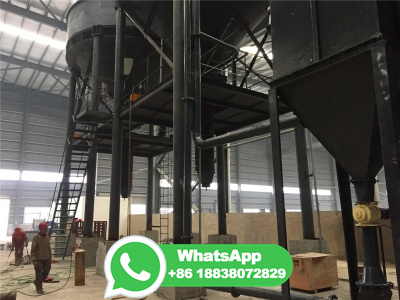
WEBJun 19, 2014 · How Natural Gas Is Formed. Natural gas is a fossil fuel, like oil and coal, which releases pollution and global warming emissions when burned. Methane, the primary component of natural gas (or just "gas"), is itself a potent global warming pollutant, more than 80 times more powerful than carbon dioxide over a 20year period. Like oil, gas is a ...
WhatsApp: +86 18203695377
WEBHydrodesulfurization (HDS), also called hydrotreatment or hydrotreating, is a alytic chemical process widely used to remove sulfur (S) from natural gas and from refined petroleum products, such as gasoline or petrol, jet fuel, kerosene, diesel fuel, and fuel oils. The purpose of removing the sulfur, and creating products such as ultralowsulfur .
WhatsApp: +86 18203695377
WEBOct 19, 2023 · Hydraulic fracturing, or fracking, is a drilling method used to extract petroleum (oil) or natural gas from deep in the planet. In the fracking process, cracks in and below Earth's surface are opened and widened by injecting water, chemicals, and sand at high pressure. Some resources extracted through fracking are called " tight oil " or ...
WhatsApp: +86 18203695377
WEBApr 8, 2024 · Coal is a blackish or brownishblack sedimentary rock that develops from coal seams, which are a type of start rock. This is thought to have been formed from the algae plants' waste. Coal is mostly composed of carbon, with trace amounts of other organic elements such as hydrogen, sulfur, oxygen, and nitrogen.
WhatsApp: +86 18203695377
WEBHence, the crude petroleum is heated in the temperature range of 400500 o C. Q6. Which gas is formed when coal is heated in the absence of air? Answer: The process of burning or heating coal in the absence of air is known as destructive distillation. As a result of this process, coal tar and coal gas are produced.
WhatsApp: +86 18203695377
WEBExplain the process of formation of petroleum. Answer. Petroleum was formed from plants and animals living in the sea. As these organisms died, their bodies settled at the bottom of the sea and got covered with layers of sand and clay.
WhatsApp: +86 18203695377
WEBJun 21, 2023 · The process of conversion of this vegetation or plants into coal is called carbonization. 7. The plants buried under the soil undergo carbonization and change into coal. ... Formation of Petroleum. Like coal, carcasses of dead plants and animals were buried at the bottom of the sea millions of years ago. ... To differentiate and explain the ...
WhatsApp: +86 18203695377
WEBDiscuss the process of destructive distillation of coal. Explain the process of separating crude oil into its usable components. Enlist the properties and uses of natural gas. Mention its major component. Make a welllabelled diagram to .
WhatsApp: +86 18203695377
WEBPetroleum is a complex mixture of compounds known as hydrocarbons (Hydrocarbons are compounds which are made up of only two elements : carbon and hydrogen). Petroleum is insoluble in water. Petroleum is a natural resource obtained from deep oil wells which are dug in certain areas of the earth. Just like coal, petroleum is also a fossil fuel.
WhatsApp: +86 18203695377
WEBCoal and petroleum are formed as a result degradation of ancient plan life which lived millions of years ago. ... explain the process of formation of Petroleum Related: Chapter 5 Coal and Petroleum Brief of Complete Chapter, Class 8 Science? for Class 8 2024 is part of Class 8 preparation. The Question and answers have been prepared ...
WhatsApp: +86 18203695377
WEBOct 5, 2020 · Explain the process of formation of. (a) Coal (b) Petroleum . Answer: (a)coalCoal is formed when dead plant matter decays into peat and is converted into coal by the heat and pressure of deep burial over millions of years. ... Some iron and steel making and other industrial processes burn coal. The extraction and use of coal causes .
WhatsApp: +86 18203695377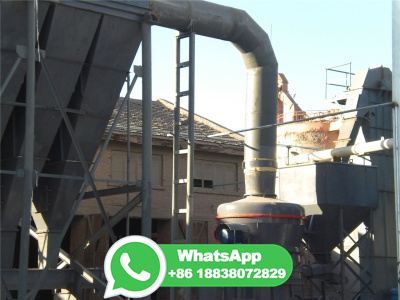
WEBCoal gas is obtained as a byproduct during the processing of coal to get coke. Explain the formation of petroleum. Ans. Petroleum was formed from organisms living in the sea. The remains of these organisms got settled at the bottom of the sea and subsequently got covered with sand and clay.
WhatsApp: +86 18203695377